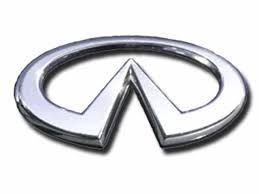EX35 RWD V6-3.5L (VQ35HR) (2008)
/Page-866007.png)
Always clean with new brake fluid. Never clean with mineral oil such as gasoline and light oil.
Torque Member
Check the torque member for rust, wear, cracks or damage. Replace the member if any abnormal condition is detected.
Piston
Check the piston for rust, wear, cracks or damage. Replace the piston if any abnormal condition is detected.
CAUTION:
A piston sliding surface is plated. Never polish with sandpaper.
Sliding Pin Bolt and Sliding Pin Boot
Check the sliding pin bolts and sliding pin boots for rust, wear, cracks or damage. Replace the parts if any abnormal condition is detected.
INSPECTION AFTER INSTALLATION
1. Check a drag of rear disc brake. If any drag is found, follow the procedure described below.
2. Remove brake pads.
3. Press the pistons.
CAUTION:
^
Never damage the piston boot.
^
When replacing a pad with new one, check a brake fluid level in the reservoir tank because brake fluid returns to master cylinder
reservoir tank when pressing piston in.
NOTE:
Use a disc brake piston tool to easily press piston.
4. Install brake pads.
5. Depress the brake pedal several times.
6. Check a drag of rear disc brake again. If any drag is found, disassemble the cylinder body.
7. Burnish contact surface between disc rotors and brake pads according after refinishing or replacing disc rotor. Refer to BR-16, "DISC ROTOR:
Inspection and Adjustment". See: Brake Rotor/Disc/Testing and Inspection/Rear
